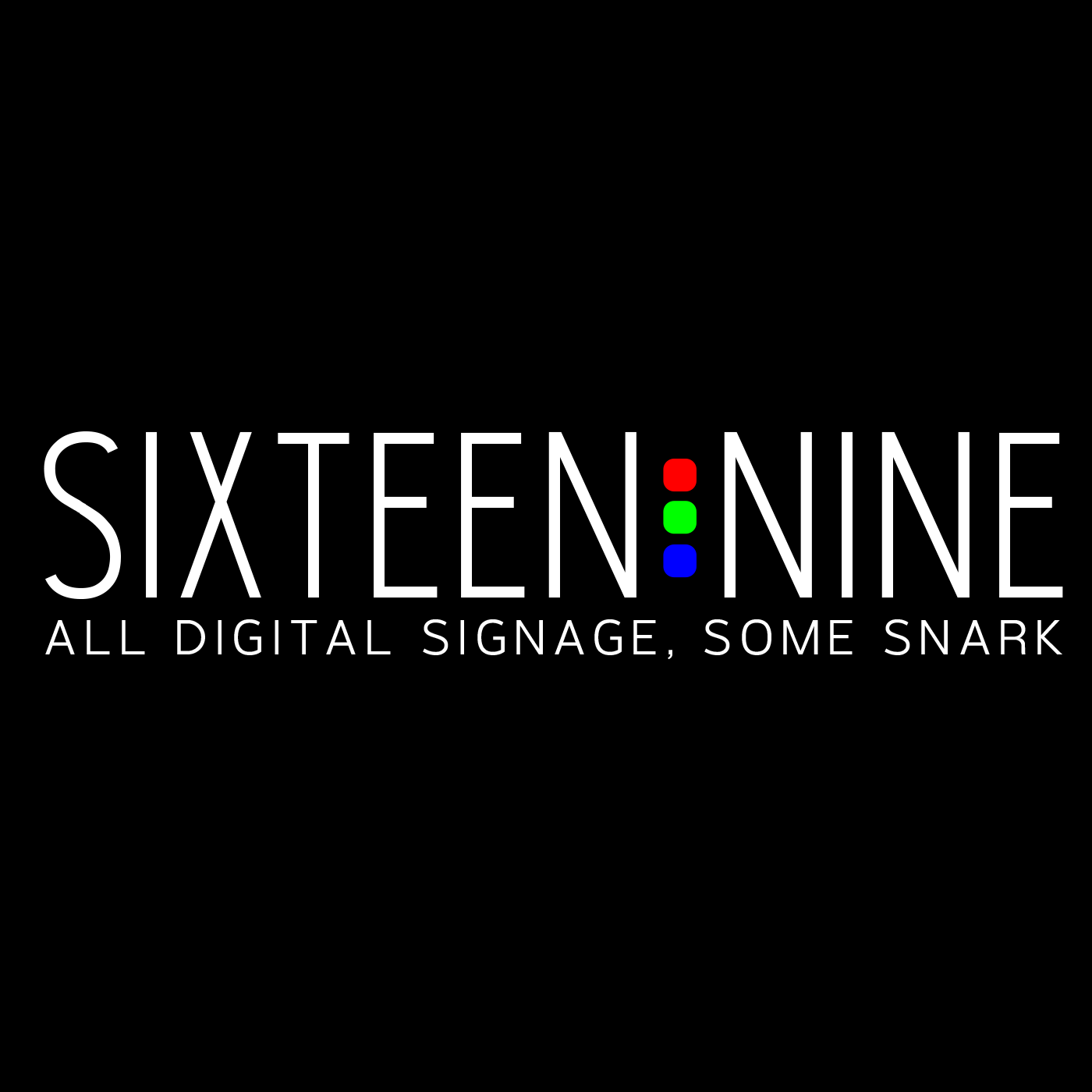Episodes

Wednesday Nov 06, 2019
Trey Courtney, Mood Media
Wednesday Nov 06, 2019
Wednesday Nov 06, 2019
There's a decent chance that when you walk into a retailer in a developed country, and you hear music or some sort of in-store audio playing, that's Mood Media.
The company is in more than half a million subscriber locations in a 100-plus countries delivering in-store media solutions. While that started with music, it was natural as digital signage technology matured to add on visual messaging.
Now the company has launched something called Mood Harmony, a new platform that grew out of a signage CMS and offers a single user experience to do sound, visuals, social media and even scent marketing off of one platform.
I had a great chat with Trey Courtney, the Global Chief Product Officer for Mood Media, to get the back-story on the company, why it developed Harmony, and how retailers are defining and using technology designed to deliver on customer experience.
Subscribe to this podcast: iTunes * Google Play * RSS

Wednesday Oct 23, 2019
Maris Ensing, Mad Systems
Wednesday Oct 23, 2019
Wednesday Oct 23, 2019
I wouldn't want the job of trying to boil down what Mad Systems does to an elevator pitch, unless it was a very tall building with a very slow elevator.
Based in Orange County, California, Mad Systems is technically an AV system designer and integrator, but these are not the guys you'd hire to put in some video-conferencing gear and some screens in the lobby.
It's not unfair to suggest the Mad in Mad Systems has to do with Maris Ensing and his engineers being a bunch of mad scientists. Go through the company's project portfolio and you find out they've put together a steam-driven aircraft and a 20-foot high tornado.
The company also did a big part of one of my favorite projects - the alumni center at the University of Oregon, which has a set of very tall, but moveable stacked LCD displays.
Ensing and his team have got involved in all kinds of things over 20 years, but in our chat, he talks a lot about a new AV management system the company has built from nothing - called Quicksilver. Among many things, Mad has patent applications underway for a new kind of facial color and pattern recognition system designed to instantly personalize visits to places like museums.
I'll let Ensing explain that and other things. This was one of my easier podcasts. He had a lot to say and there was little room for questions. Enjoy.
Subscribe to this podcast: iTunes * Google Play * RSS
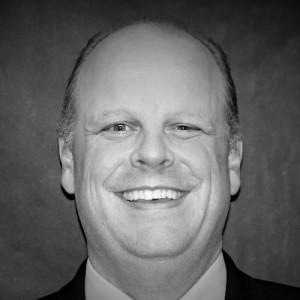
Wednesday Oct 16, 2019
IV Dickson, SageNet
Wednesday Oct 16, 2019
Wednesday Oct 16, 2019
It's now really common that businesses of all sizes and types who decide to deploy some sort of digital signage network look to a solutions provider who will not only help put it in, but help the client go from the idea stage all the way through to ongoing operations.
Effectively, they're outsourcing the whole shooting match to people who know what they're doing. That helps companies stay focused on what they're good at.
Tulsa-based SageNet has been doing outsourced IT work for 20 years, and about two years ago saw enough shaking among its core customers - and had enough requests for help - to branch into digital signage and make it part of a very rich suite of services.
The company brought on IV Dickson, who has been around the signage business forever, to help build out the signage business and function as a subject matter expert in a company that was more conditioned to selling IT network services.
It's worked out, and the company is now mining a lot of new opportunities in verticals like c-stores and QSR.
I had a great chat with IV about SageNet and SageView, what is described as a one-stop shop for everything signage.
We also talk opera. Yeah, opera.
Subscribe to this podcast: iTunes * Google Play * RSS

Wednesday Oct 09, 2019
Matt Schmitt, Reflect
Wednesday Oct 09, 2019
Wednesday Oct 09, 2019
Reflect is one of the longest running companies in the digital signage sector - operating out of Dallas since 2001. The company built up its CMS software business largely in retail, but in early 2017 did something of a pivot into ad scheduling and targeting.
I wondered, when I first got walked through what's called Ad Logic, why Reflect was going in that direction, given the addressable market seemed a little limited and companies like Broadsign had a serious head-start on competitors.
Turns out that Reflect was responding to client needs for something that was kinda sorta digital OOH, but was less about agency-driven media scheduling and more about retail and place-based networks that wanted to monetize their screens with endemic advertising. So in a medical office network, they wanted to schedule and runs ads for, say, big pharma and medical device brands.
I spoke with Reflect's president and co-founder Matt Schmitt about his company's journey, and how Reflect has evolved from a software shop to one offering everything from strategy to creative work and media sales.
Subscribe to this podcast: iTunes * Google Play * RSS

Wednesday Oct 02, 2019
Daniel Griffin, Userful
Wednesday Oct 02, 2019
Wednesday Oct 02, 2019
Like a lot of people in the digital signage industry, I tend to think about video walls in terms of the display hardware, and what's running on those big beautiful screens. I know precious little about what's happening behind the wall to ensure it all looks good.
Userful has been making waves for a few years now by offering a software-driven product that drives visuals accurately to screens, and allows for the sort of flexibility and instant switches that are needed in scenarios like control rooms.
While traditional video wall systems can tend to have a lot of often expensive hardware and software to control the screen and send pixels where they need to be, Userful has been marketing products that are now cloud-based and require minimal hardware.
I spoke with Daniel Griffin, the company's VP of Marketing and a company long-timer. We talked about how Userful came about and about a business that's still known for video walls, but is finding its way into other aspects of visual communications around workplaces because of its AV over networks capabilities.
Subscribe to this podcast: iTunes * Google Play * RSS
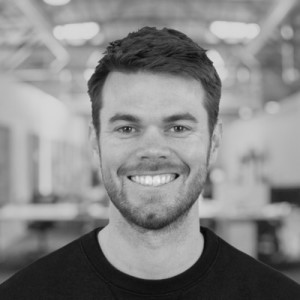
Wednesday Sep 11, 2019
Marshall Thompson, Signet
Wednesday Sep 11, 2019
Wednesday Sep 11, 2019
Workplace communications have developed into a very active, very big vertical for a lot of companies across the digital signage ecosystem - but most of their activity has involved screens positioned around the white collar and, increasingly, blue collar workspaces.
For most companies, workplaces is A vertical. For Signet, it is THE vertical, and the Silicon valley-based company has built up a tidy business being laser-focused on workplaces and particularly on the briefing and experience centers of Fortune 5000 companies.
These are the high-touch, big visual impact designated areas that companies build to entertain, inform and hopefully close major customers - using everything from big video walls to interactive displays.
I spoke with Marshal Thompson, who runs client solutions for the company. We get into what Signet does and how it found its way into corporate communications, the thinking and impact of these briefing centers, and how workplace communications is so important to attracting and keeping talent in hyper-competitive places like Silicon Valley.
Subscribe to this podcast: iTunes * Google Play * RSS

Wednesday Sep 04, 2019
Jeff Hastings, BrightSign (2019)
Wednesday Sep 04, 2019
Wednesday Sep 04, 2019
I've done a podcast interview with Jeff Hastings in the past, but there's a lot going on with BrightSign and it was time for a catch-up with the CEO.
BrightSign will ship about 300,000 little purple digital signage players this year, at a clip of something like 1,200 units a day. The players have become their own hardware category - as in, "Are you planning to use PCs, smart displays or BrightSign boxes?"
In our chat, we talk about why BrightSign devices have so much traction in the marketplace, and why so many software and solutions companies are signing on now as integrated partners.
We get into the thinking behind a service called BSN Cloud that is now coming out of beta testing and into wider release.
And we talk broadly about what CIOs and IT managers need to think about when they start looking at large, scaled digital signage networks. The IT guys I used to refer to as the Dr. No crowd are now very much on board with using special purpose devices that just work, and don't bring the headaches of full PCs and their operating systems.
Subscribe to this podcast: iTunes * Google Play * RSS
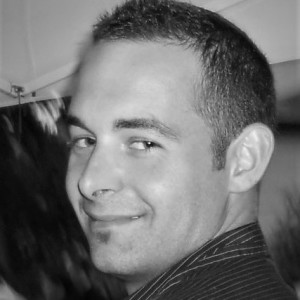
Wednesday Aug 28, 2019
Dan Baker, AVI Systems
Wednesday Aug 28, 2019
Wednesday Aug 28, 2019
If you are on the solutions side of the digital signage business, you have likely, at some point, had to open up and look over an RFP document from an end-user, quietly praying it won't be too onerous and/or stupid.
A lot of digital signage RFPs still - in 2019 - lead with technology, going on and on and on about specs and requirements, and only making a passing reference to content. Which is nutty, because the screens have only nominal value and impact if the content on them isn't timely, relevant and at least kinda sorta visually interesting.
Dan Baker handles the sales engineering for digital signage at AVI Systems, a big Minneapolis-area integrator. He's seen those kinds of RFPs, and knows through experience there's a better way.
He contacted me, offering to talk about his take, and his company's take, on a methodical process that, at minimum, gets end-users thinking about objectives and the content needed to meet them. Some companies are mandated to do RFPs - it's just how their procurement department rolls - but in a perfect world, end-users are usually better skipping RFPs and working with people who know digital signage.
The right advisors can help them get to the content and technology model that will actually deliver on objectives, and keep them from spending big on tech they need, while largely forgetting what will go on the screens.
Subscribe to this podcast: iTunes * Google Play * RSS

Wednesday Aug 21, 2019
Jay Leedy, Diversified
Wednesday Aug 21, 2019
Wednesday Aug 21, 2019
There are a handful of big AV systems integrators in North America genuinely active in digital signage, but I'm feeling pretty comfy saying New Jersey-based Diversified is the most active, experienced and directly knowledgeable about this industry.
The company has built and then managed many of the larger networks out there, including most of the big US banks that the average person could name. While some of the other big AV/IT guys have some dedicated resources, Diversified has a whole and big group pretty much doing nothing but digital signage and digital out of home work. The company also put the time and money into hiring a series of subject matter experts on digital signage - one of them being Jay Leedy, who is now Director of Business Development for what many people in the industry know as Diversified's Digital Media Group, or DMG.
Jay's based down in Atlanta but works with people and companies across the country. In this talk, we get into what DMG is all about, how they plug into this sector, and how they tend to work with clients and partners.
We also talk Adobe - a company more active in signage than many of us probably think - and Google, and the adoption rates out there for smart signage.
Subscribe to this podcast: iTunes * Google Play * RSS

Wednesday Jul 24, 2019
Mike Kilian, Mvix, On Workplace Communications
Wednesday Jul 24, 2019
Wednesday Jul 24, 2019
Just about anyone involved on the sales or management side of digital signage these days knows that workplace communications has pretty quickly grown into one of the most active and interesting verticals.
With QSRs, the other hot vertical, you're doing menus and digital promo posters. In the workplace, all kinds of interesting things are possible, and can make a difference.
In this podcast, I spend some time with Mike Kilian of the DC-based CMS and solutions company Mvix. I've done a podcast in the past with Mike, but based on chatting with him at Infocomm, we decided to do a new one talking about the opportunities and challenges of digital signage in everything from offices to factory floors.
It would seem like the rise of big data and IoT sensors would open up a lot of possibilities to visualize data and automate content. But in this conversation, you'll learn it's not that easy to do when IT people are worried about security, and the machines and sensors that could spit out useful data have few standards or common formats.
If you are a business communicator, this is a useful listen.
Subscribe to this podcast: iTunes * Google Play * RSS

Wednesday Jul 10, 2019
JJ Parker, Tightrope Media Systems
Wednesday Jul 10, 2019
Wednesday Jul 10, 2019
Tightrope Media Systems is one of the oldest companies in the digital signage ecosystem, with roots tracing back to 1997 in Minneapolis.
Co-founder J.J. Parker bought a stack of books and taught himself coding to come up with what was then called a video bulletin board system for local schools. They managed to sell a license, and another, and another, and Tightrope turned into a real company with employees.
More than two decades later, Tightrope is still at it, and doing well, with some 40 employees and a digital signage product called Carousel that's focused on two key markets - education and workplaces.
An interesting note is that Carousel works on Apple TVs. It's not one of those cases where a developer got something to work, and not much more. The platform is integrated with enterprise-grade management platform called JAMF, and Apple's education sales team actually buddy-calls with Carousel.
Parker kindly took a half-hour away from a working vacation in Madrid with his family to walk me through the roots of Tightrope and where things now sit.
Subscribe to this podcast: iTunes * Google Play * RSS
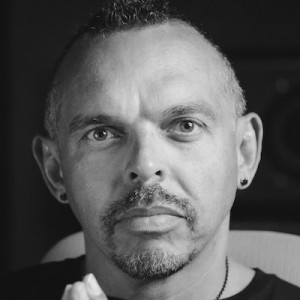
Wednesday May 29, 2019
Ronnie Lee, Holocryptics
Wednesday May 29, 2019
Wednesday May 29, 2019
When DSE was on a few weeks ago in Las Vegas, I wandered down to the other end of the convention center to get a glimpse of the legendarily crazy Nightclub and Bar Show - where endless booths pour free drink samples.
I wanted to see how nuts it really was, but I was also on a mission to see the set-up of a Vegas start-up called Holocryptics, which is building a service around hologram-like virtual DJs that any nightclub or bar can rent by the hour.
Holocryptics provides to operators a packaged kit that includes a built-in media server, projector and mesh direct-projection surface. The DJs are custom videotaped in a studio, and high-end audio recorded, to produce files that look, on a transparent screen, like the bobbing and juking knob-twirlers are really there.
It could cost $1,000s to get a seasoned DJ to do a set at a club. With this set-up, there's a pretty reasonable one-time CAPEX hit, and then a DJ set costs less than $30. And it can get launched and controlled off a smartphone app.
I spoke with founder Ronnie Lee about the roots of his company, how things work, why holograms and how this could - in theory - be applied to all kinds of things, like political whistle-stops and distance learning.
Subscribe to this podcast: iTunes * Google Play * RSS


Wednesday May 22, 2019
Fab Stanghieri, Cineplex Digital Media
Wednesday May 22, 2019
Wednesday May 22, 2019
Canadians all know Cineplex as the dominant movie theater chain in that country, and the Toronto-based company has also been expanding its reach, in recent years, into other related lines of business.
Cineplex now has entertainment-centric restaurant-bars, is bringing Top Golf into Canada, sells out of home media and runs a thriving digital media group that's doing most aspects of digital signage for major enterprise customers in Canada and beyond those borders.
Fab Stanghieri was a senior real estate guy with Cineplex, charged with building and managing the company's movie house portfolio. He had digital media added to his responsibilities a few years ago, and while it was unfamiliar territory at first, he's embraced digital to a degree that it is now his primary focus in the company.
I was passing through Toronto a couple of weeks ago, and Fab kindly took some time to show me around new office space, which is set up to help ideate, deliver and manage digital signage solutions for Cineplex clients.
Subscribe to this podcast: iTunes * Google Play * RSS

Wednesday May 15, 2019
Dan Hagen, 10net
Wednesday May 15, 2019
Wednesday May 15, 2019
Dan Hagen is a relatively young guy, and a bit of an Energizer Bunny. I know of him as the 10net guy from Vancouver, but I was surprised to learn in a conversation that he has been involved in digital signage since before it was called digital signage.
He was a funding founder of Mercury Online Solutions, which in the late 90s and early 2000s was a big player in this business. That company sold to 3M, and as way too often happens, things went south quickly when a plucky little company gets absorbed into a monster of a company.
Hagen did a few things but eventually found his way to 10net, which is a solutions provider that does most of its work in Vancouver, BC, but is now trying to establish itself south of the border in the Pacific Northwest and beyond.
In our chat, we get into how 10net does things, the kinds of projects it works on, and our shared point off view that sum of the most effective digital signage jobs out there are, at first glance, kinda boring looking.
There's not a lot of sizzle in things like backroom screens for safety messaging on ferries, but they make a real difference.
Subscribe to this podcast: iTunes * Google Play * RSS

Wednesday Mar 13, 2019
Bjorn Pieper, NDS
Wednesday Mar 13, 2019
Wednesday Mar 13, 2019
The Dutch software company NDS has been offering a digital signage software solution for 25 years now, and like the handful of other companies that have been around this business that long, they've survived and grown based on the ability to do certain things very well.
In the case of NDS, the company's roots and core business are at airports. That started with getting arrivals and departures data up on passenger terminal screens, and over the years, grown more sophisticated.
Airports are cities, in many respects, and they are the precursors for the smart cities digital signage networks that are starting to bubble up globally. You tie into a lot of systems, and what's visualized on the screens reflects what is going on, more broadly, in the facility or area.
I spoke with Bjorn Pieper, the Chief Commercial Officer for NDS, about how his company works not only with airports, but a lot of big corporations, to make digital signage networks that are truly smart.
Subscribe to this podcast: iTunes * Google Play * RSS
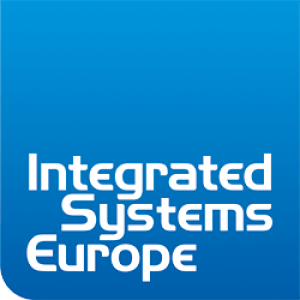
Wednesday Mar 06, 2019
ISE Chats: SodaClick content and Inotouch transparent LED film
Wednesday Mar 06, 2019
Wednesday Mar 06, 2019
ISE already seems like a long time ago, and I had to go into my digital recorder's SD card to look over what interviews I had not yet dug out and made ready for podcasts.
This episode features a couple of shorter interviews with companies that I bumped into, in and around ISE's largely dedicated digital signage hall.
The first is with a start-up based in London - called SodaClick - that Jason Cremins of Signagelive encouraged me to go see. These guys do creative templates for digital signage, and the interesting things for me were first, that the output files are HTML5, and second, that the guys behind it are graphic designers first. That second point matters because I have seen affordable digital signage content creation platforms in the past that worked well enough, but offered template designs that totally looked like they were designed by software developers with few or no design chops.
I spoke with SodaClick founder Ibrahim Jan.
The second interview is with a company from South Korea called Inotouch. One of the things I was looking for at ISE was transparent LED on clear film - not the semi-transparent stuff that's part of mesh curtains. Most of what I saw didn't look so hot, the exception being what LG was showing at its mega-booth, and these guys.
Their film was genuinely transparent and they had a tighter pixel pitch than what LG has on offer. It's the sort of thing that would go on windows in retail and on big glass curtain walls - assuming things like heat load are sorted out.
I spoke with Eugene Bae of Inotouch.
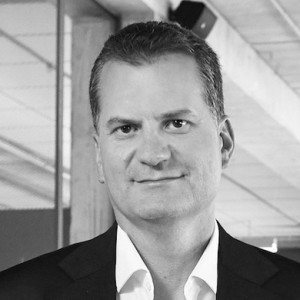
Wednesday Feb 20, 2019
Alberto Cáceres, Trison
Wednesday Feb 20, 2019
Wednesday Feb 20, 2019
Being in Amsterdam for ISE recently offered a chance to meet up and talk to some people who are squarely focused on business on the other side of the Atlantic.
I knew Trison was a major player in digital signage solutions in its home country of Spain, but I didn't realize the company had a far greater reach than that. In 2018, Trison was in the middle of 2,500 digital signage and related jobs, in 76 countries.
The company started 20 years ago doing audio solutions, in northwest Spain, and has grown into the major solutions provider for retail digital signage in Europe and beyond. A Coruna is home base, but Trison has offices in Madrid, Barcelona, Paris, Shanghai, Mexico City and elsewhere.
I spoke with CEO Alberto Cáceres outside the ISE press room.
Subscribe to this podcast: iTunes * Google Play * RSS
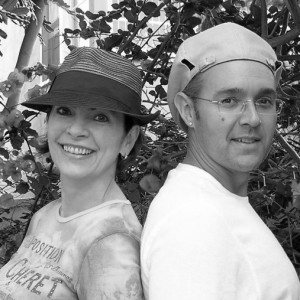
Wednesday Feb 06, 2019
Lauren Millar & Mark Stasiuk, Fusion CI Studios
Wednesday Feb 06, 2019
Wednesday Feb 06, 2019
If you've been to the Salesforce headquarters in San Francisco, or certain resort casinos, you will have seen and been blown away by giant virtual waterfalls that appear on LED walls and wash down, over and around things like entryways.
It's kind of amazing, and way beyond much of what you see on big digital canvases - like big 4K stock videos or graphics.
This stuff is part creative - part science, and the company that does this kind of work better than anyone is a little studio that works half and half out of LA and Vancouver. Fusion CI Studios got its start doing special effects for things like disaster movies and action flicks. They virtually part Red Seas, burst dams and blow things up.
One of Fusion's co-founders, Mark Stasiuk, took the weird career path of being a volcanologist with a PhD in geophysical fluid mechanics, who taught himself visual effects so he could more effectively explain the science. He got good enough at it that Hollywood special effects people started calling.
That science background is the big differentiator between what Fusion can do, versus creative shops that are all about the design.
I grabbed Stasiuk and co-founder Lauren Millar for a call, and we walked through how this all started, their process, and why this level of visuals is so impactful.
Subscribe to this podcast: iTunes * Google Play * RSS

Wednesday Jan 30, 2019
David Bailey, Aitrak
Wednesday Jan 30, 2019
Wednesday Jan 30, 2019
It doesn't matter how slick your software is, or how beautiful and robust a display may be, if the content on a digital sign doesn't attract attention and hold it, at least for a bit.
So tools that help track and analyze how people view advertising, packaging and other marketing messages can be incredibly valuable. But they can also be clunky, expensive and slow.
A startup called Aitrak is trying to change that - using artificial intelligence and computer vision to do predictive modeling on how people will consume specific pieces of campaign creative - where they'll look, what they'll notice first, and how long they'll look.
Eye-track = Aitrak, by the way.
Creatives and media planners can use Aitrak's tools, or send the material to Aitrak to develop the model and insights.
Right now, the first iteration is built around static out of home street furniture posters and other non-motion creative. But Aitrak is working on the same sort of tool for motion digital assets and creative. That would allow media network owners, agencies and brands to pre-select the best combinations of creative for a location in a matter of minutes, and cut their costs dramatic ally.
I spoke with UK-based CEO David Bailey about a cloud-based service he says gives creatives superpowers.

Wednesday Jan 16, 2019
Leo Resig, Chive Media
Wednesday Jan 16, 2019
Wednesday Jan 16, 2019
The big selling point for Chive TV is that the streaming channel's five-hour mix of curated social media content keeps butts in barstools.
The Austin, Texas-based company has some 4,000 bar and restaurant venues running content on one or many of their TVs, and about 500 more come on monthly - with a lot of that growth through word of mouth.
Now Chive has broadened its free streaming content offer beyond just bars - adding venues like gyms, medical clinics and workspace break rooms. There will soon be 10 different channels of content on what's now branded as Atmosphere TV.
Chive was founded about a decade ago by two brothers, and I spoke with one of them - Leo Resig - about how it all started, why they created a streaming TV channel, and how charitable work is a big part of what they do.
Subscribe to this podcast: iTunes * Google Play * RSS

